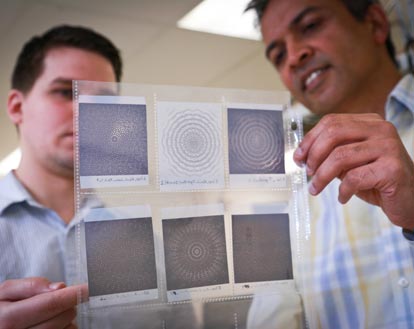Engineers from the University of Utah have discovered a filter for wireless communications that allows users of electronic devices to download data more than 1,000 times faster.
Andrew Paulson, project lead and terahertz researcher, has been working on this research for more than two years. Paulson started by considering how to tap into terahertz radiation, which is a band of frequencies in the electromagnetic spectrum. Paulson discovered one way to tap into this frequency is through a pass band filter.
“What we’ve done is created filters that work in the terahertz region, where only certain frequencies of the terahertz light will go through the filter, and the other frequencies are either attenuated or reflected back,” Paulson said.
The Terahertz Research at the university is funded by the Material Research Science Engineering Center and is headed by Professor Nahata.
Terahertz radiation can be used for medical technology and security applications; however, Paulson’s main area of focus is using these frequencies to improve communication systems and increase bandwidth.
“Everybody now has a smart phone, everybody’s downloading videos, everybody’s consuming a lot of data. In the future, cell phone towers might be devices affixed to buildings or light posts rather than standalone structures, and instead of downloading at 100 megabits per minute, you might be able to download at speeds of up to a gigabit per second. That’s sort of an untapped potential that exists,” Paulson added.





